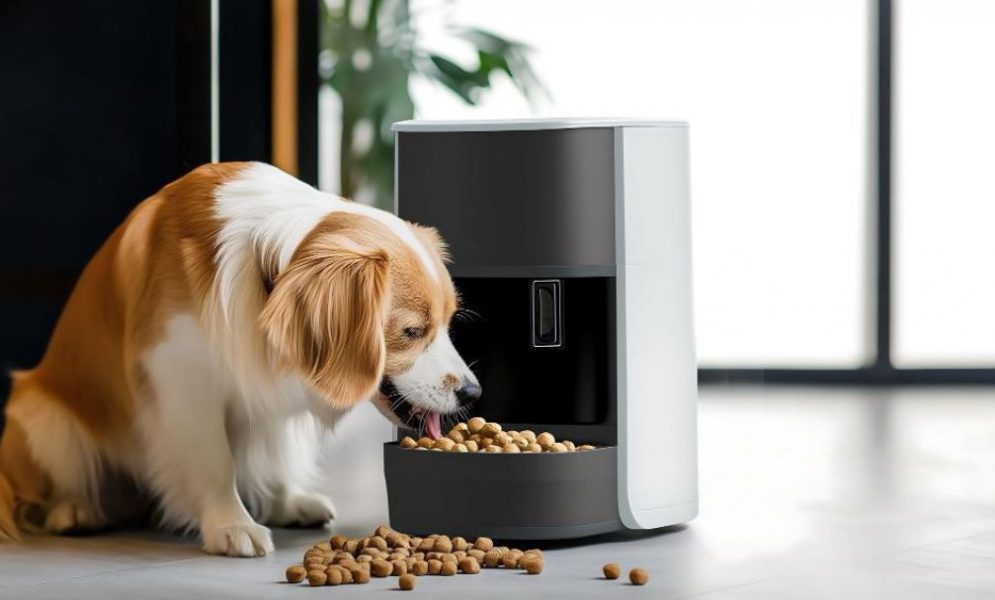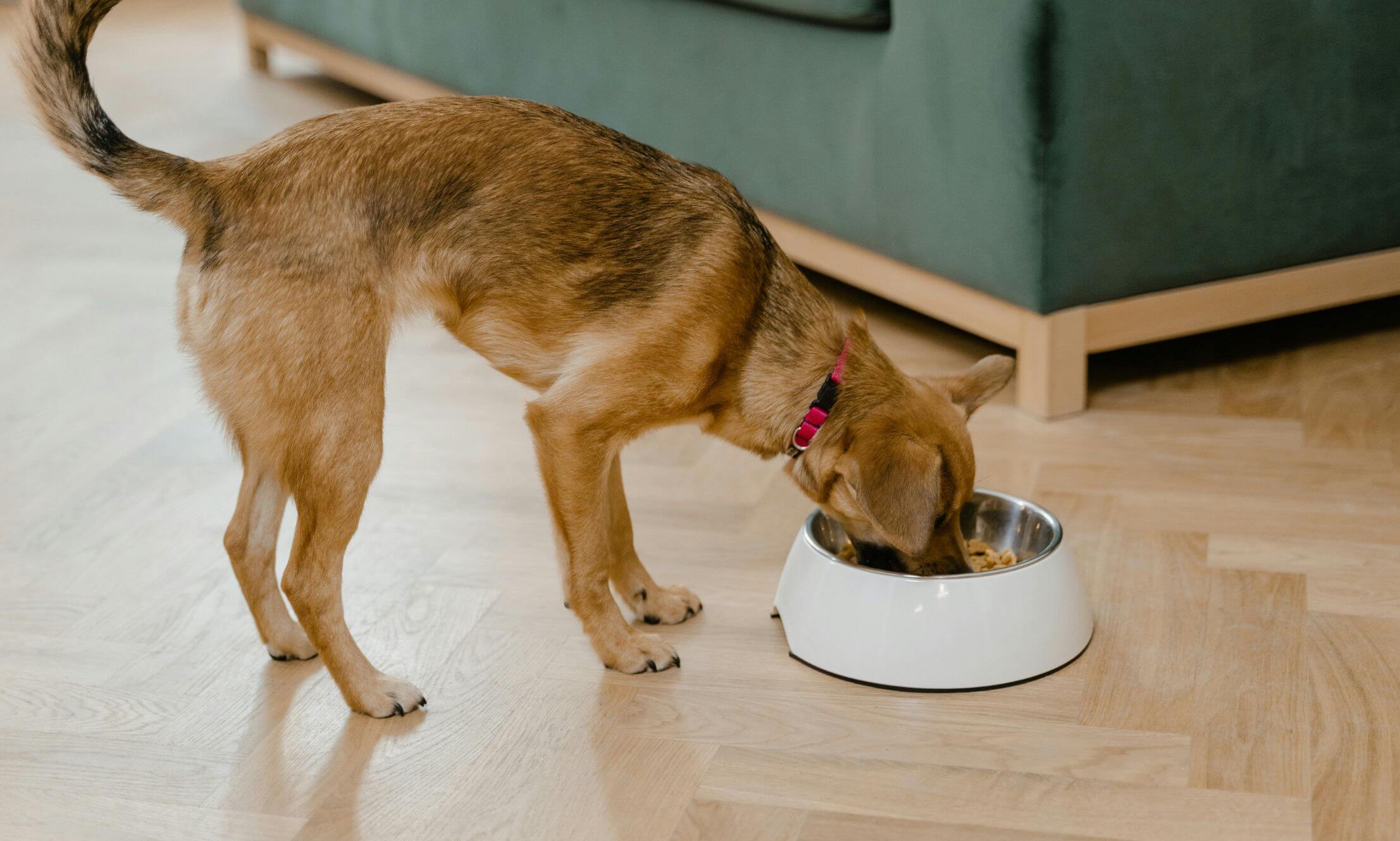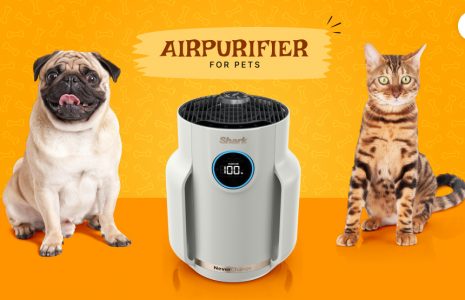How Smart Feeders Transform Pet Nutrition Tracking


How often do you find that when feeding your pet you have doubts if you got the portion right? But with the technology moving as fast as it does, those days are becoming a distant memory.
Today’s automatic smart pet feeders are a lot different. They don’t just serve meals — they monitor, adapt, and help fine-tune your pet’s nutrition making it not only more convenient but also providing you with peace of mind that your pet is being looked after.
We’re no longer just feeding our pets — we’re proactively managing diet to support their long-term health, prevent problems before they start, and give our furry friends more good years. We’re replacing guesswork with real data, and that’s a difference maker.
The difference between guessing and knowing what your pet eats isn’t just peace of mind – it’s potentially years of added healthy life.
The Nutrition Tracking Revolution in Modern Pet Care

The way we’ve fed our pets for decades comes with more guesswork than most of us realize. That familiar scoop of kibble? Depending on the kibble’s shape, density, and how fast you’re moving in the morning, it could be off by as much as 25%. That’s a lot of nutritional variation over time.
Smart feeders are quietly solving this issue. The best ones out there deliver each portion with gram-level accuracy, helping to eliminate the slow, unnoticed weight gain that often happens from inconsistent feeding.
Just like wearables changed how we track our own health, connected feeders are doing the same for pets. Studies from veterinary nutritionists have linked regular, measured feeding – not just the amount but also the timing – to better digestion, leaner body weight, and even improved behavior.
That said, not all pets need rigid routines. Outdoor cats or working breeds sometimes benefit from a bit of unpredictability—feeding patterns that reflect how they’d eat in the wild.
Still, the biggest shift isn’t just in portions—it’s in visibility. These devices reveal patterns we’d otherwise miss, and that insight changes everything.
Smart Technology Features That Make Pet Nutrition Monitoring Possible
Today’s automatic pet feeders are a far cry from the basic timed dispensers many of us used years ago. The newest smart models come packed with features that turn ordinary mealtime into a source of real health insight.
- Precision weighing systems that measure exact food consumption
- Meal-by-meal tracking that identifies eating pattern changes
- Consumption speed monitoring that can detect dental pain or nausea
- App notifications for refusal, overeating, or irregular patterns
Premium automatic dog feeders now include integrated scales that weigh food before and after dispensing, creating accurate records of not just what was offered but what was actually consumed.
The app ecosystems supporting these smart pet feeders transform feeding data into actionable insights. Gradual consumption changes that might be imperceptible day-to-day become obvious when visualized over weeks or months.
The collection of pet feeding data raises legitimate privacy questions rarely discussed in pet tech reviews. Some smart feeder companies are building detailed databases of pet eating habits, health conditions, and household patterns that extend beyond nutrition.
The most advanced systems now include predictive algorithms that can flag potential health concerns before they’re visually apparent, such as reduced appetite patterns that might indicate developing illness.
Setting Up Your Automatic Pet Feeder for Optimal Nutrition Tracking
When setting up your automatic dog or cat feeder, it is essential to configure it properly so you can monitor your pet’s nutrition in a meaningful way. Here are a few recommended steps for accuracy:
- Calibrate your automatic cat feeder or dog feeder with the specific food you use
- Measure how much your pet consumes over 7-10 days before making judgments
- Program consistent feeding times that allow you to recognize patterns
- Set up alerts for variations greater than 10% from normal consumption
For kibble density variations (an often-overlooked factor), modern automatic pet feeders with weight-based dispensing rather than volume-based portions provide significantly more accurate nutrition tracking.
While technology makes tracking easier, some veterinary nutritionists caution that the precision of smart feeders can create false confidence. No tracking system replaces the value of physically observing your pet during meals, particularly for detecting subtle chewing difficulties or nausea signs that technology can’t yet measure.
For households with pets on prescription diets, many smart pet feeders now offer lockable compartments and feeding scheduler apps that create foolproof compliance with veterinary feeding instructions.
Addressing Specific Health Conditions Through Precision Feeding
Automatic pet feeders shine brightest when managing specific health conditions:
- Weight Management: Programmable automatic pet feeders allow for the gradual portion reduction that vets recommend – often just 3-5% less food weekly, a precision difficult to achieve with manual feeding. The consumption tracking creates accountability and evidence-based adjustment.
- Diabetes Management: For diabetic pets, consistent carbohydrate intake timing is critical. Advanced timed pet feeders now offer feeding accuracy within 30-second windows, with redundant power systems ensuring meals are never delayed despite tech issues.
- Kidney Disease: Pets with kidney disease require precise water intake monitoring alongside carefully measured food portions. The newest integrated smart pet feeders track both food and water consumption, creating comprehensive health dashboards.
Not all medical conditions benefit from automated feeding. Pets with certain oral conditions, swallowing disorders, or severe anxiety may need the supervised feeding and encouragement that technology can’t provide. Always consult your veterinarian before automating feeding for medically complex pets.
The data collected through smart pet feeders often proves invaluable during veterinary consultations, replacing vague owner impressions with precise consumption records that can influence treatment decisions.
Multi-Pet Household Solutions That Track Individual Nutrition
For homes with multiple pets, microchip pet feeders have revolutionized individual nutrition tracking. These systems recognize specific pets through implanted microchips or RFID collar tags, creating individual feeding profiles that prevent food stealing while maintaining detailed consumption records for each pet.
This technology solves the previously impossible challenge of monitoring individual intake in multi-pet homes where animals often swap bowls or steal food.
While technological solutions prevent food stealing, they sometimes create new stressors. Some pets develop anxiety around microchip feeders if they’ve experienced negative activation experiences or exclusion. The psychological aspects of feeding technology deserve more attention than they typically receive in product reviews.
For households with pets on different diets (prescription vs. regular, weight management vs. maintenance), these systems eliminate the constant vigilance previously required to ensure each pet receives only their appropriate food.
Beyond Basic Tracking: Advanced Nutrition Management
Some of the most advanced automatic pet feeders now have features that enable mixed-diet programming that was previously impossible to automate:
- Scheduled dry food with programmed wet food reminders
- Slow-feed dispensing patterns for pets gobble their food too fast
- Seasonal portion adjustments based on activity levels and temperature
Some even include separate compartments for supplement dispensing for pets who require medication with food.
While we strive to track our pet’s nutrition as much as possible, often overdoing this can overshadow the social aspect of feeding.
Some vets who study pet behaviors caution that we shouldn’t eliminate entirely the bond-building aspects of manual feeding. Don’t completely abandon the habits of hand-feeding, even while leveraging technology for daily nutrition management.
The future of nutrition tracking looks even more promising, with several manufacturers developing systems that can analyze food freshness, detect spoilage, and even assess hydration levels through integrated water consumption monitoring.
Transforming Data Into Better Health Outcomes
Smart pet feeders are made for more than just convenience – they act as preventative health tools to some extent that could extend and improve your pet’s life through precision nutrition management.
The data these systems collect creates a partnership between pet parent, technology, and veterinarian that enables truly proactive rather than reactive health care.
Technology enhances our ability to care for our pets, but it doesn’t replace the fundamental human responsibility of attentive observation and compassionate care.
With the right automatic pet feeder properly configured, you’re not just feeding your pet—you’re managing their nutrition with the precision that can add healthy years to their life.








Leave A Comment